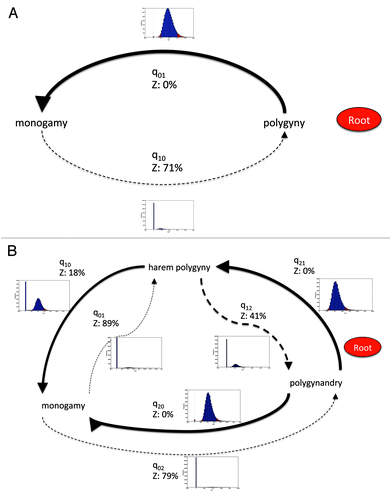Figures & data
Figure 1. Model of evolution of primate mating systems showing posterior distribution of transition rates between states. A. Monogamy and polygyny. B. Monogamy, harem-polygyny and polygynandry. Thickness of arrows reflects proportion of time the transition rate is not zero. Z denotes a zero transition rate as a proportion of posterior probability distribution. A dashed line denotes a zero transition rate in the RJ derived model. Graphs show posterior probability distribution of each transition rate.

Figure 2. Primate phylogeny with ancestral states for mating systems derived from RJ MCMC model of evolution. The tree topology is the maximum clade credibility tree from the 10k Trees ProjectCitation13 posterior distribution with branch length drawn proportional to time. Branches and tips are colored for polygynandry (red), harem-polygyny (orange) and monogamy (pink) where the combined probability of the state and the branch is greater than or equal to 0.7. Where the combined probability is less than 0.7 the branch is gray.
